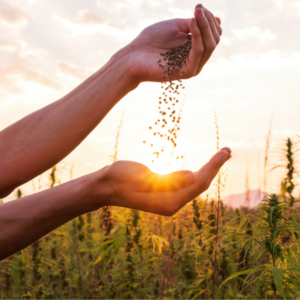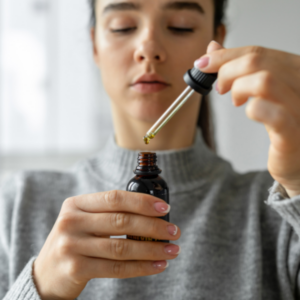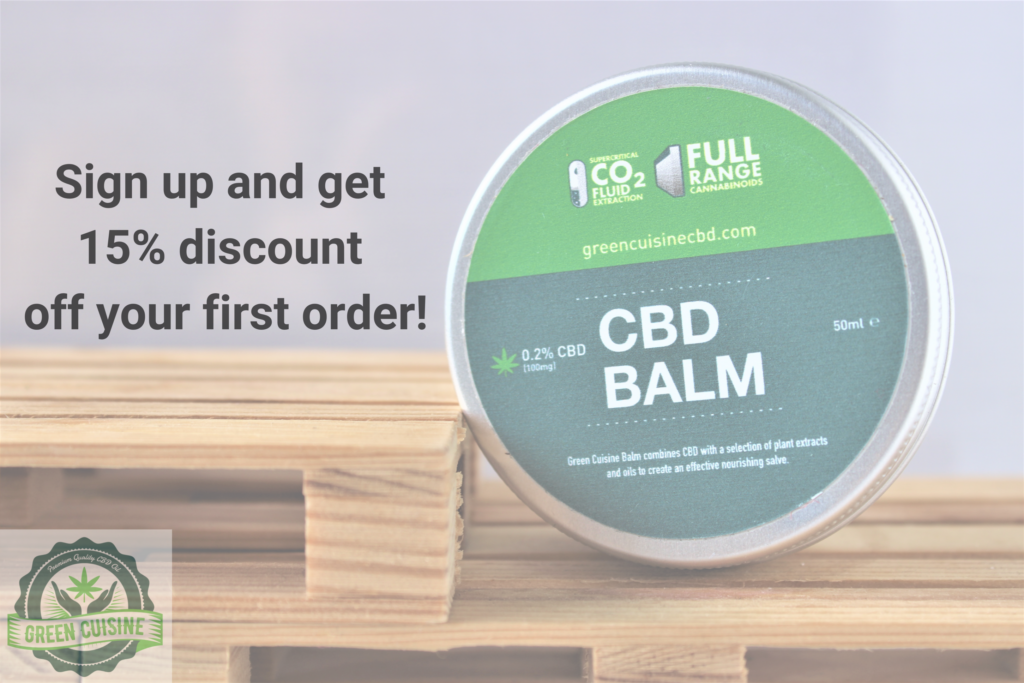Sports injury treatments are often time-consuming, challenging, and require dedication. Not all treatments are the same, but the general purpose is: to help restore function and range of motion to any injured areas while reducing pain and discomfort.
Most injured people eventually use physical therapy to treat chronic pain or acute pain (such as that caused by injuries). Physiotherapy treatments can include a variety of different techniques and tactics, ranging from stretches to lifestyle changes.
Physiotherapists’ traditional methods may differ from what we see nowadays, and that’s a good thing. The development and discovery of new therapeutic agents, such as CBD, allow physiotherapists to reach an entirely new efficiency level for sports injury treatments.
In addition to the regular benefits of physio, CBD oil can promote muscle relaxation, reduce pain, increase the rate of healing and improve the overall physio experience. This article will explain how and why physical therapists, traditional or otherwise, should teach their patients how to use CBD to improve their health and recovery.
What Is CBD?
CBD is short for cannabidiol, a cannabinoid that is extracted from the hemp plant. CBD can also be extracted from marijuana, although due to legal complications, CBD oil is produced using legal, agricultural grade hemp, which was legalized in 2018 due to the newly legislated Farm Bill that separated marijuana from hemp.
CBD differs from most of the other cannabinoids found in cannabis because it doesn’t get you high. It can be consumed orally or smoked, and the only psychoactivity is enhanced mental clarity and perhaps some mental relaxation.
When it comes to cannabidiol and sports performance, users often use the product topically in the form of a salve, lotion, or oil. In this case, the product is not making it into the bloodstream. For this purpose, technically, any form of cannabis oil could be used. Even a THC-rich salve can be used topically without the risk of getting high (although there is a very low chance that this could lead to a false-positive drug test).
Why Use CBD for Sports Injury Treatments?
Physical therapists’ traditional treatments involve exercises, education, and recommendations for lifestyle choices that can encourage quick healing. The goal is restoration, as quickly and effectively as possible.
When physical therapists treat chronic pain, they aim to increase the quality of the patient’s life. By offering new strategies, helping to train patients with ergonomic movements, and advising them on how to best tackle their daily movements, physical therapy can help bring people back to (or pretty close to) a state of balance.
So how does CBD fit into this picture?
CBD is a potent natural supplement. It has very few side effects, but there are many CBD health benefits. It can help with several different issues — many of which you’re likely trying to treat with physiotherapy.
- CBD can help to reduce inflammation at the site of an injury. Some inflammation is essential, even necessary, to trigger your immune system and relay the message that there is an injury in need of assistance. However, inflammation is also painful and can restrict motion. Natural anti-inflammatories like CBD can help to reduce inflammation without compromising your immune system’s ability to heal the area.
- CBD reduces pain. Not only does CBD reduce inflammation and the pain that it causes, but it can also directly decrease the perception of pain. It does this by increasing the body’s production of a compound known as anandamide. Anandamide helps to reduce the potency of pain signals in the nervous system.
- CBD promotes relaxation. Stress and anxiety can both lead to tension. Tension can be physical and mental, yet either type of tension can impede your progress in physical therapy. Tense muscles are harder to work with, and an anxious mind is not open or willing to try new things. CBD can relax both the mind and body, thus opening one up to better receive the benefits of physical therapy.
As you can imagine, combining CBD with physiotherapist treatments would be a great way to reduce some of the discomforts. This, in turn, could improve the efficacy of the treatment and ensure a faster recovery.
CBD for Injuries Sustained By Runners & Athletes
Physiotherapists and doctors who offer sports injury treatments often work with patients who have sustained injuries by running or other non-competitive athletic activities. Running injuries are very common, but that doesn’t make them any less severe.
CBD can be useful for helping injured runners and athletes in their recovery.
- Due to its anti-inflammatory properties, CBD is believed to help speed up injury recovery.
- CBD can reduce pain and discomfort allowing runners to engage in physiotherapy techniques, such as stretching, with more ease.
- CBD can reduce the stress and anxiety caused by an injury. Both of these mental issues can cause psychosomatic symptoms in the body that can detract from the healing process.
Incorporating CBD Into Physical Therapy
If you’re interested in using CBD for your physical therapy treatment, here are a few ideas of how you can go about doing it.
Enjoy a CBD Massage
Massage is an important component of physiotherapy. A massage doesn’t just feel nice: a deep tissue massage, performed by a professional, can release tension, improve posture, and help restore balance to the body.
A cannabis oil massage can have a much more positive effect. In addition to the benefits of standard massage therapy, using a cannabis-based CBD massage oil can help to fight inflammation, decrease pain, and further promote relaxation.
Many physio treatments are incorporating a cannabis oil massage into their standard protocols for muscle relaxation. Cannabis and the various cannabinoids found within have proven so useful, time and again, that some medical professionals are beginning to consider them primary treatments rather than alternatives.
Use a CBD Tincture Prior to Physio
CBD tinctures are among the simplest and most effective ways to use the supplement. Tinctures are solutions of an active compound – in this case, CBD – suspended in liquid, usually alcohol.
Most of what vendors label as CBD tinctures are actually CBD oils since the majority of liquid CBD products are suspended in olive oil, MCT oil, or something similar, instead of alcohol.
Tinctures can be taken orally and swallowed, but they are more effective when taken sublingually (held under the tongue for a few minutes). Doing this allows the CBD to absorb into your bloodstream and take effect almost immediately.
Taking CBD prior to physio is a great choice because it can help to reduce some of the uncomfortable sensations associated with physical therapy. CBD can fight not only the physical discomfort but the mental discomfort (anxiety, stress, etc.) as well.
Cannabidiol and Sports Performance: Benefits of CBD for Athletes
Many athletes have used CBD to improve their performance.
Because it’s relatively benign, CBD was actually removed from the list of prohibited substances in 2018 by the World Anti-Doping Agency, as well as by the US Anti-Doping Agency. THC remains on the list, although CBD is no longer considered a ‘performance-enhancing drug.’
The main risk faced by athletes when using CBD is the possibility of purchasing an impure product containing THC. This might cause a false-positive drug test.
Aside from that, there are plenty of reasons that athletes might want to use CBD.
Reducing Pain and Improving Recovery
Pain can hinder athletes by restricting their range of motion or causing them to ‘tap out’ sooner. CBD can help to reduce pain, both by decreasing inflammation and by increasing the production of the anti-pain signaling compound anandamide.
Runners and athletes are all too familiar with the pain that we feel in the muscles after an intense workout. This is partially caused by inflammation, and it’s one of the biggest hurdles to overcome during our workout recovery. By reducing inflammation, CBD can thereby increase our recovery speed.
Alternative to Addictive Drugs
Many athletes end up addicted to prescription narcotics (including opioids like morphine and oxycodone) or neuroleptic drugs like gabapentin. These drugs are inherently dangerous and can lead to overdoses and intense withdrawal symptoms. Withdrawal from neuroleptics can be fatal.
CBD can help to reduce dependence on these drugs. CBD reduces pain and it can also reduce the symptoms of withdrawal. Studies done have revealed that CBD not only decreased the severity of withdrawal in a number of heroin addicts but also decreased their cravings for the drug despite being in the throes of withdrawal.
Improving Sleep
Sleep is incredibly important for athletes. This is the time during which your body repairs and restores itself. Muscle tissue is repaired during your sleeping hours, allowing you to grow stronger. Hormones are also replenished during the nighttime, ensuring that you’ll have the proper balance of compounds flowing through your blood in the morning for your next competition.
Tips to Prepare for a Marathon or Competition
If you’re going to be running a marathon or performing in any sort of athletic competition then you need to know how to do it properly! Here are a few tips that can help push you towards first place next time you compete.
Follow Your Four Building Blocks
The four building blocks are the main elements of marathon training. These include:
- Base mileage. You should aim to steadily increase the base mileage that you run each week throughout the course of your preparation.
- The long run. Once a week you should build up to a weekly long run, making sure to cut off a few miles every 3 weeks or so to ensure that your body doesn’t get overworked.
- Speed work. Switching between sprints and rhythmic running can help you prepare for a real marathon.
- Rest and recovery. Possibly the most important part of running is recovering because during your recovery time you get stronger. CBD can be especially useful during the recovery phase. Light activity and cross-training, like yoga, weight lifting, and hiking can be helpful.
Race Day Tips & Techniques
- Practice anything that you might need to do during a marathon beforehand. For example, practice drinking from a hydration pack while you’re running. Practice popping an energy gel into your mouth while you’re on the move.
- Make sure your pre-race snack is light and taken several hours before the race.
- Dress appropriately, remembering that morning races will see a temperature increase
Recovery
Make sure to rehydrate as soon as you’re done the race; electrolyte beverages are your best bet. Do some post-race stretching and a slow walk to loosen up. Replenish your carbs right away, too, even if you don’t feel like it.
After your race, you’re going to want to take at least a week away from any intense physical activity, especially from running. During this time make sure that you eat healthy food, stay well hydrated, and take care of your body.
Conclusion
Physiotherapy is an important practice for anyone who wants to recover quickly from an injury. Supplements like CBD can be useful for speeding up the process. If you’ve struggled with a sports injury don’t hesitate to ask your physiotherapist about the use of CBD.





